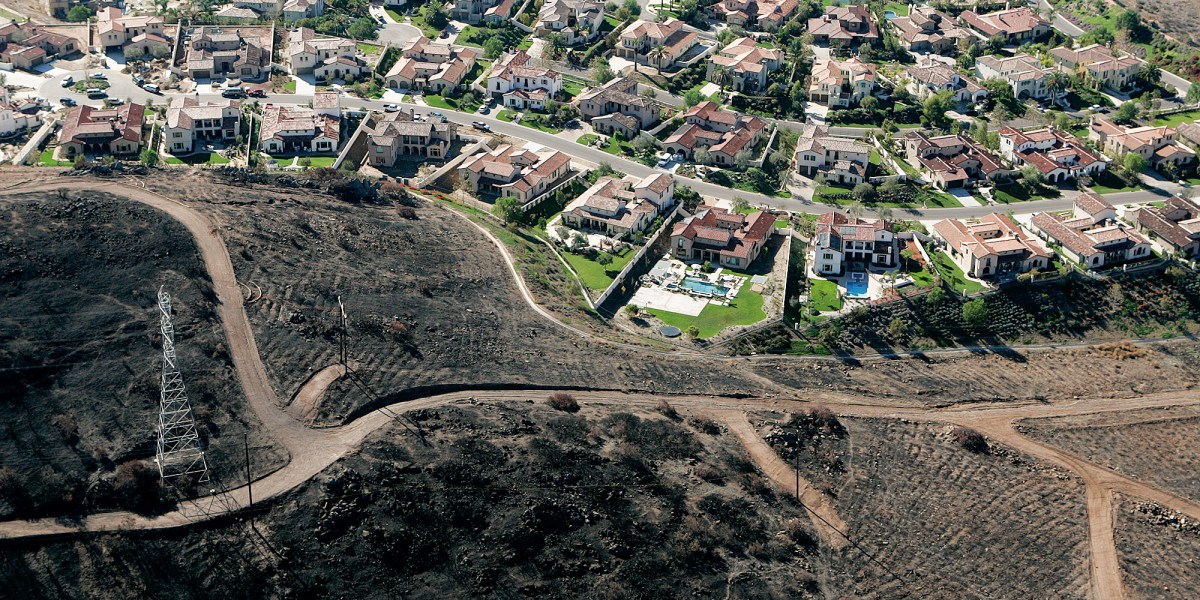The quest to build wildfire-resistant homes

“We have to get over this idea that it’s always the best thing to actually evacuate,” says Kolden. “We used to have community bomb shelters, right? These are functionally community fire shelters. Those are the sort of conversations that we haven’t had. And if we really want to build fire-resilient communities, we have to have those going forward.”
Our shelters
The basic science of preventing a building from burning is not especially high tech or expensive, but it is counterintuitive to how we have long thought about wildfire. In the 1970s, when Jack Cohen pioneered the concept of “defensible space,” a zone cleared of flammable vegetation or other fuel around a structure, the US Forest Service largely ignored him. It was a paradigm-shifting innovation—an easily implemented retrofit, at least wherever the space was available—but it meant considering wildfire from a defensive position instead of the offensive one the Forest Service had adopted for nearly 100 years.
Today regulators have come around, and California building standards for wildland areas at high and very high fire risk now require 100 feet of open space around structures, at least where there is 100 feet available to clear. Other home-hardening measures are comparably small scale, even cheap: replacing flammable roofs, closing window seams and junctions, using fine wire mesh to cover vents where sparks might enter. And the latest fire-resistant materials won’t save a house where the gutters have been allowed to fill with dry kindling. Form tends to follow function: flat roofs, steel windows, clean lines that leave no harbor for a stray ember. Each devastating fire is bound to encourage a new innovation as fresh weaknesses are revealed.
The basic science of preventing a building from burning is not especially high tech or expensive, but it is counterintuitive to how we have long thought about wildfire.
California’s strictest fire code applies only to homes in a clearly designated high-risk area (where, according to the California Department of Forestry and Fire Prevention, roughly one in four residential structures lies)—and only to those that are newly built. In Paradise, where a fire in 2018 killed at least 85 people and destroyed more than 18,000 structures, nearly 40% of homes built after 1996 survived, versus just 11% of those built before.
The incremental addition of more and denser housing in flammable dead-end canyons is a concern, says Thomas Cova, an evacuation researcher and professor of geography at the University of Utah. The space between houses, or lack thereof, is a significant predictor of whether or not they’ll burn. Building suburban infill is in many ways good housing policy for a state suffering from a severe lack of affordable homes, but it is bad land-use policy for a state with recurring intense wildfires. Still, there’s little clear incentive for local officials to prevent the construction of new homes, even ones that will increase the risk for the entire community. One more flammable structure on the hillside, one or two more cars on the road—but also revenue collected from one more property tax bill.
Extensive retrofitting of the built environment in towns and cities established nearly a century ago is essentially off the table—it is work that isn’t required under state codes, and no clear funding source is available. Even where communities are wiped out by fire, existing roads don’t fall under the purview of minimum fire regulations when it comes time to rebuild. But entirely new housing tracts are held to much higher standards.
“I’ve always thought of shelter-in-place as a backup plan in emergencies, and it would be really wise to consider what options you might have,” says Cova. “But now, I think it’s also entering into the discussion associated with [new] development.”
That’s especially true in light of California’s acute housing affordability crisis, which has put the state under severe pressure not only to continue building new homes but to build them on cheaper, more rural, more fire-risky land. A new guidance issued in October 2022 by the California state attorney general explicitly calls for local agencies to “avoid overreliance on community evacuation plans” and consider shelter-in-place options.



